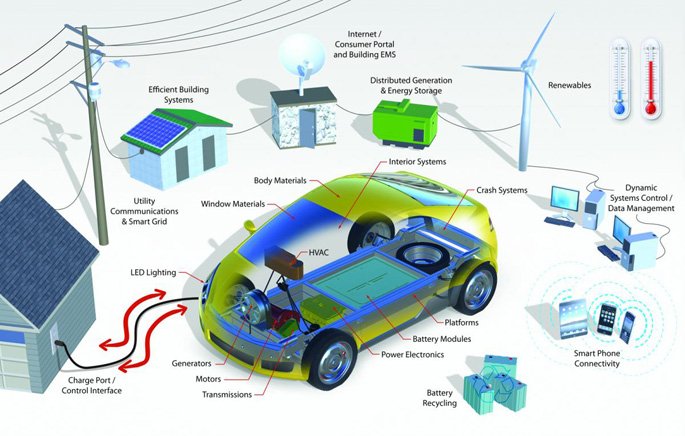Until recently, there were moves to ensure that all passenger vehicles sold by 2030 were electric vehicles (EVs). The latest reports suggest that instead of a mandate or target, the government should focus on an enabling framework for EVs.
A more India-specific concern will be that of the electricity grid. Can it handle this demand? How does this help the environment if most power comes from coal-fired power? A simple answer given by many is that we will use solar photovoltaics (PV) to charge EVs. This marriage of EV and PV is much harder than people think, but concerted action and policies that rethink electricity’s ecosystem and pricing, can make EVs both greener and cheaper to run.
Solar power has a well-known bell-curved shape for maximum possible output, with a peak around noon, falling to zero output by night. Therefore, for anyone plugging in an EV, or even switching on a light bulb, this means that RE may at best contribute some fraction of energy at different times (the wind often does blow overnight).
Ev’s are unlikely to be stationary and plugged in midday so a a lot of charging will happen overnight. Overnight charging is good in many ways, since it can use off-peak and “surplus” power, and less expensive, lower- speed charging may suffice, compared to expensive fast-charging technology. But overnight also rules out solar energy, except in a yet unproven model of battery swapping, which may anyway be geared more towards selected fleet vehicles.
A subtler question is what will be the source of additional supply into the grid, i.e., what is the swing producer? RE should never be a swing producer as it is fleeting (use-it-or-lose-it) and a swing producer, by definition, has to be available on-demand. While in the US it is natural gas, in India it is coal.
EVs can and should use RE as much as possible. If we have EVs sooner than “surplus RE”, we can still use coal—while not ideal from a carbon perspective, during lean periods it is the cheapest power available.
Today, nothing stops consumers from plugging in EVs during the grid’s evening peak period so more than a manufacturing-centric EV policy, we need a set of ecosystem-level EV policies. Otherwise, at best, we’ll emit more carbon, but, at worst, our already-straining electricity grid could be pushed to near breaking.






